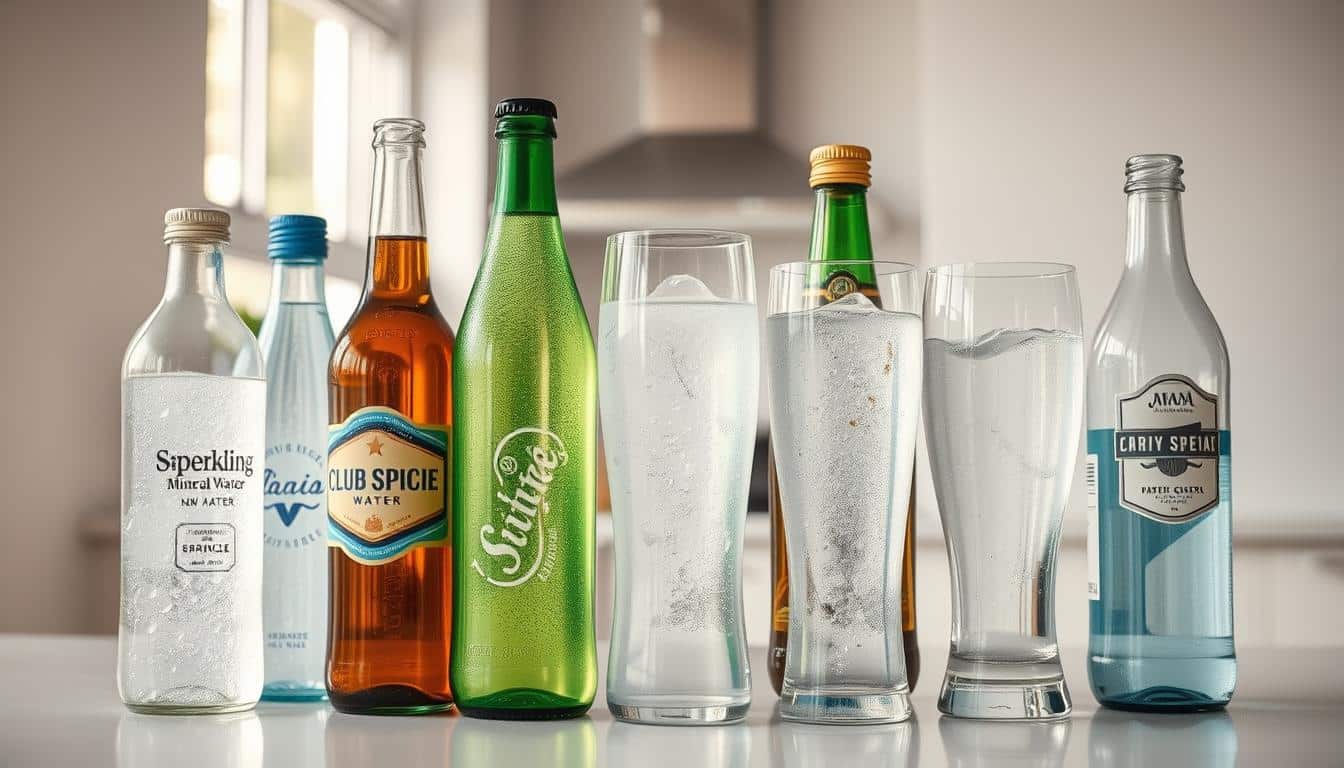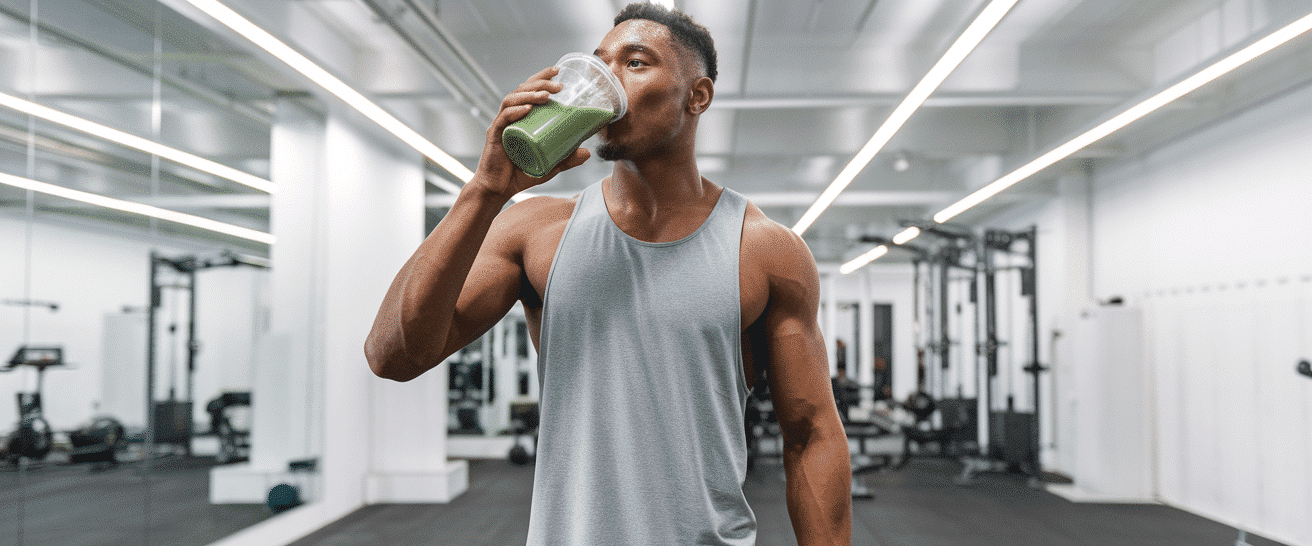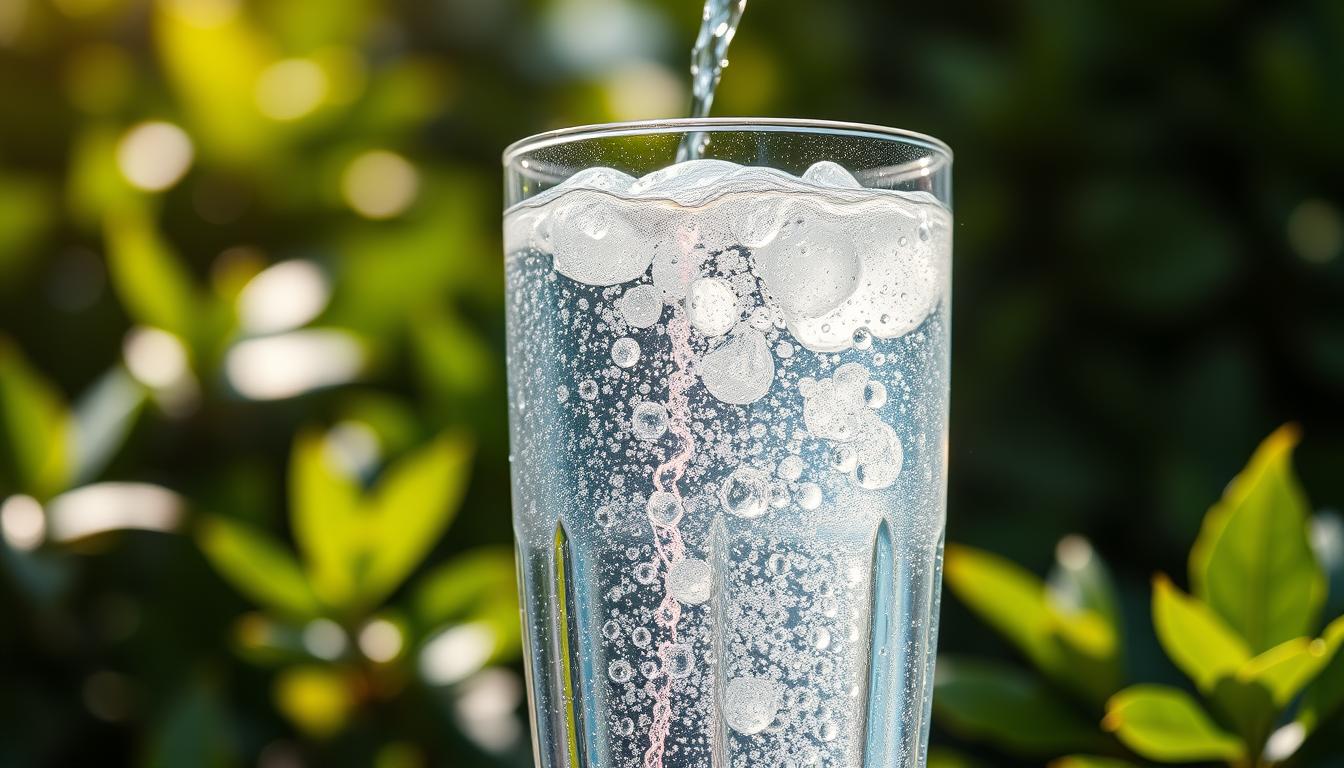64% of Americans now reach for bubbly drinks instead of soda when craving something flavorful. But here’s what might surprise you: research from the American Journal of Clinical Nutrition confirms carbonated options hydrate just as effectively as their flat counterparts.
Let’s clear the air about those effervescent bubbles. Many active adults worry that choosing fizzy drinks means sacrificing proper fluid intake. I’ve tested this myself during marathon training seasons—swapping plain H2O for citrus-infused seltzer didn’t impact my performance or recovery.
What truly matters? Avoiding added sugars and artificial sweeteners. When you pick unsweetened varieties, you’re not just satisfying taste buds—you’re supporting your body’s needs. Even elite athletes include these bubbly options in their hydration strategies during intense workouts.
Curious about making the switch? Start by replacing one daily still drink with a carbonated version. Notice how your energy levels and workout recovery feel. For those who dislike plain flavors, try adding fresh mint or cucumber slices to plain seltzer.
The bottom line: your preference for bubbles or stillness doesn’t dictate hydration success. What counts is consistently reaching for sugar-free options that keep you drinking throughout the day.
What Is Sparkling Water?
That crisp fizz in your glass starts with a simple science trick. Carbonated water gets its personality from pressurized carbon dioxide gas dissolving into liquid. This creates those playful bubbles and slight tang you either love or tolerate.

Four Main Players in the Fizz Game
Not all bubbly drinks work the same. Let’s break them down:
- Seltzer: Pure water + CO₂. No extras, just clean refreshment
- Mineral water: Naturally contains calcium and magnesium from underground springs
- Club soda: Adds sodium bicarbonate for subtle saltiness
- Tonic water: Contains quinine and sweeteners – best reserved for cocktails
The Bubble Factory Process
Manufacturers use two methods to create carbonation. Natural versions capture gas from mineral springs during bottling. Most commercial brands inject CO₂ under high pressure. Both techniques create that signature effervescence through carbonic acid formation.
When choosing your bubbly fix, check the ingredients list. Pure options contain just water and carbon dioxide. Flavored varieties might add natural essences – steer clear of those with hidden sweeteners if you’re watching sugar intake.
Understanding Hydration Benefits
Every cell in your body relies on fluids to function properly. Dehydration triggers fatigue faster than skipping breakfast, and 75% of Americans operate below optimal fluid levels according to CDC data. Let’s explore why your daily drink choices impact more than just thirst.

The Role of Water in the Body
Your system uses fluids like a high-performance engine uses oil. Three critical processes depend on consistent intake:
| Body Function | Hydration Benefit |
|---|---|
| Temperature control | Prevents overheating during workouts |
| Nutrient delivery | Fuels muscles within 15 minutes |
| Toxin removal | Flushes waste via kidneys daily |
Basic Nutritional Insights
Active adults need 20-50% more fluids than standard guidelines. Consider these targets:
| Activity Level | Men (oz/day) | Women (oz/day) |
|---|---|---|
| Light exercise | 135 | 100 |
| Intense training | 160 | 120 |
Thirst signals appear after you’re already 2% dehydrated. Carry a reusable bottle and sip hourly during work or workouts. Pair this habit with electrolyte-rich snacks like bananas to maintain mineral balance.
is sparkling water good for hydration
Research labs have put carbonated drinks under the microscope to answer this pressing question. Scientists developed the Beverage Hydration Index (BHI) to measure how different liquids perform. This tool compares urine output after drinking various options against plain water.
What the Numbers Reveal
A landmark trial tested 13 common drinks using BHI measurements. Here’s how they stacked up:
| Beverage | Hydration Score |
|---|---|
| Still Water | 1.0 (baseline) |
| Sparkling Water | 1.0 |
| Sports Drink | 1.1 |
| Soda | 0.8 |
| Coffee | 0.9 |
The results show zero difference between flat and bubbly versions. Both scored a perfect 1.0 match in hydration effectiveness. A separate trial tracked athletes replacing half their fluid intake with carbonated options. Their urine gravity tests matched the control group’s exactly.
You might wonder about the fizz factor. Carbonation slightly increases stomach fullness temporarily, but doesn’t slow absorption. Your kidneys process both liquid types at identical rates. The key takeaway? Choose unsweetened versions, and you’re golden.
Next time you crave bubbles, grab that seltzer guilt-free. Your body treats it like any other zero-calorie hydrator. Just watch out for sodium content in some mineral waters if you’re managing blood pressure.
Health Benefits and Wellness Impact
The fizz in your glass might do more than tickle your taste buds. Beyond hydration, carbonated drinks offer surprising advantages for your digestive system and eating habits.
When Bubbles Meet Biology
Sparkling water creates gentle pressure in your stomach that sends satisfaction signals to your brain. This natural response helps you:
- Feel full 20% longer than with flat water
- Reduce snack cravings by 15% in afternoon hours
- Slow food digestion for steadier energy
Research shows these effects work best when you drink carbonated options before meals. A University of Tokyo trial found participants ate 10% less when starting with bubbly water.
For those managing constipation, studies reveal regular consumption can:
- Improve bowel movement frequency by 40%
- Reduce abdominal discomfort in 67% of cases
- Enhance gut motility similar to fiber supplements
The benefits extend to breaking soda habits. The crisp texture satisfies cravings for sugary drinks without empty calories. Try pairing citrus-flavored seltzer with meals – you’ll get the taste excitement your brain wants, minus the sugar crash.
While not a magic solution, these health benefits make carbonated water a smart tool for mindful eaters. Just remember to choose unsweetened varieties to maximize advantages.
Possible Side Effects and Considerations
While many enjoy bubbly drinks without issues, some may experience minor effects worth noting. Let’s explore what to watch for when making carbonated options part of your routine.
Stomach Sensitivity
Carbonation can create temporary pressure in your digestive system. If you’re prone to digestive discomfort, you might notice occasional bloating or gas after drinking sparkling water. These effects typically resolve within 30-60 minutes as your body processes the bubbles.
Tooth Protection Tips
Plain varieties pose minimal risk, but flavored options often contain citric acid. This additive increases acidity levels that could weaken enamel over time. Check labels for these three ingredients to avoid:
- Added sugars (even natural ones)
- Phosphoric acid
- Artificial flavor enhancers
Here’s some good news: unflavored seltzer has similar acidity to flat water. The weak carbonic acid in bubbly drinks doesn’t harm stomach lining or teeth when consumed moderately. For extra protection, rinse your mouth with plain water after enjoying flavored versions.
Sparkling Water in Daily Life
Modern offices now stock fridges with more than just stale coffee and sugary sodas. Forward-thinking companies recognize that hydration choices impact both employee health and productivity. Let’s explore practical ways to integrate bubbly options into your routine.
Workplace Hydration Options
Corporate wellness programs increasingly feature flavored seltzers alongside traditional pitchers. A 2023 survey found workplaces offering carbonated options saw 38% higher water intake among staff. Compare these common breakroom choices:
| Beverage | Calories | Sugar (g) | Hydration Score |
|---|---|---|---|
| Plain sparkling water | 0 | 0 | 1.0 |
| Diet soda | 0 | 0 | 0.7 |
| Regular soda | 150 | 39 | 0.8 |
| Sweetened iced tea | 90 | 22 | 0.6 |
Keep a reusable bottle at your desk and alternate between still water and bubbly versions. This simple switch helps many people meet daily fluid goals without flavor fatigue.
Dietary Choices and Alternatives
Nutritionists suggest pairing meals with unsweetened carbonated drinks to enhance satisfaction. Try these easy swaps:
- Replace afternoon soda with lime-infused seltzer
- Mix plain sparkling water with 20% fruit juice
- Use bubbly options as a cocktail mixer base
The global market boom means you’ll find more options than ever. Stock both regular water and flavored fizzy varieties to suit different cravings throughout the day. Your taste buds – and hydration levels – will thank you.
Conclusion
Your favorite fizzy drink just earned its place in your hydration toolkit. Studies confirm what athletes already know – those crisp bubbles deliver the same hydration benefits as still versions when you choose wisely. I’ve seen clients transform their routines by swapping sugary drinks for plain seltzer, often reporting better energy and workout recovery.
Keep it simple: prioritize unsweetened options like mineral water or basic club soda. If you crave variety, infuse plain bubbly with frozen berries or herbs. Remember, consistency beats perfection – even replacing one soda daily with sparkling water boosts your fluid intake without sacrificing taste.
Trust your body’s signals. Some prefer the gentle fullness carbonation provides, while others stick to still for intense workouts. What matters most? Finding options you’ll drink consistently throughout the day. Your water bottle should work for you, not against your preferences.
Ready to make bubbles part of your routine? Start small. Try a citrus-infused seltzer post-workout or mineral water with lunch. Your taste buds – and health goals – will thank you for the upgrade.


